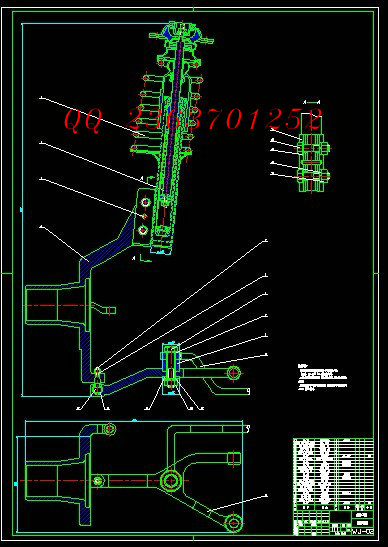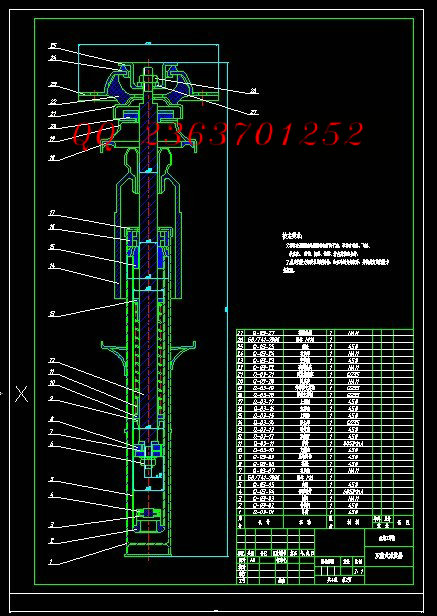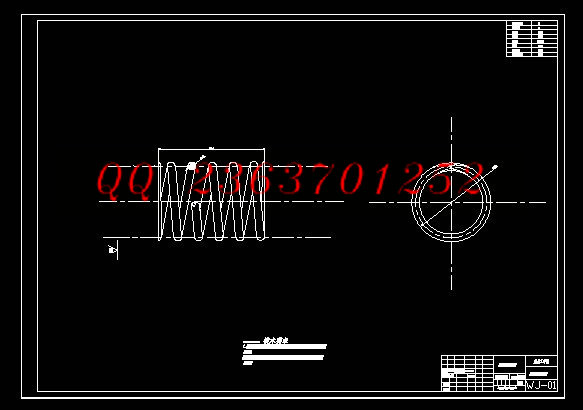|
设计描述:
文档包括:
Word版设计说明书1份,共40页,约14800字
开题报告一份
外文翻译一份
CAD版本图纸,共3张
Catia三维图 33张
汽车麦弗逊悬架设计及运动学分析
摘 要:随着汽车工业技术的发展,人们对汽车的行驶平顺性,操纵稳定性以及乘坐舒适性和安全性的要求越来越高。汽车行驶平顺性反映了人们的乘坐舒适性,而舒适性则与悬架密切相关。因此,悬架系统的开发与设计具有很大的实际意义。
本次设计主要研究的是麦弗逊悬架系统的硬件选择设计,计算出悬架的刚度、静挠度和动挠度及选择出弹簧的各部分尺寸,并且通过阻尼系数和最大卸荷力确定了减振器的主要尺寸,最后进行了横向稳定杆的设计以及CATIA三维建模及运动仿真分析。
关键词:麦弗逊悬架;结构设计;三维建模;运动仿真;仿真分析
Design and Kinematics Analysis of Macpherson Suspension of Automobile
Abstract: With the development of automobile industry technology, automobile riding comfort, handling stability and ride comfort and safety requirements are getting higher and higher. Car ride reflects people's comfort; comfort is closely related to the suspension. As a result, the suspension system development and design has great practical significance.
This design mainly is the research of the Macpherson suspension system hardware design, calculate the stiffness of the suspension dynamic deflection and static deflection and choose the parts dimensions of the spring, and damping coefficient and maximum unloading force to determine the main dimensions of the shock absorber, finally this paper gives the design of the horizontal stabilizer bar and CATIA 3D modeling and motion simulation analysis.
Key words: Macpherson suspension; Architectural design; Three-dimensional modeling; Motion simulation; The simulation analysis
目 录
1 绪论 1
1.1 汽车悬架的功用 1
1.2 悬架的组成 1
1.2.1弹性元件 1
1.2.2减振器 2
1.2.3导向机构 2
1.2.4横向稳定器 3
1.3 悬架的分类 3
1.3.1非独立悬架 3
1.3.2独立悬架 3
1.3.3麦弗逊式悬架 4
1.4 悬架的国内外发展情况 6
2 悬架的分析设计 8
2.1 悬架总体参数计算 8
2.2 悬架的空间几何参数 8
2.3 悬架的弹性特性和工作行程 8
2.3.1悬架弹性特性 8
2.3.2悬架的工作行程 9
2.3.3悬架频率的选择 10
3 悬架主要零件的设计 11
3.1 螺旋弹簧的设计 11
3.1.1螺旋弹簧参数的计算 11
3.1.2螺旋弹簧的刚度 11
3.1.3计算弹簧钢丝直径(满载时) 11
3.1.4弹簧的校核 12
3.1.5小结 12
3.2 减震器的设计 13
3.2.1减振器结构类型的选择 13
3.2.2减振器的比较 13
3.2.3减振器的特性 14
3.2.4减振器阻尼系数δ 的确定 15
3.2.5减震器最大卸荷力 的确定 15
3.2.6减震器工作缸直径D的确定 16
3.2.7贮油筒直径 的确定 16
3.3 横向稳定杆的设计 16
3.3.1横向稳定杆的作用 16
3.3.2横向稳定杆的参数 17
4 悬架导向机构的设计 18
4.1 侧倾中心的高度 18
4.2 侧倾轴线 18
4.3 侧倾角刚度 18
4.4 侧倾角刚度的计算 19
4.5 导向机构受力分析 19
5 CATIA悬架模型的建立 21
5.1 CATIA软件简介 21
5.2 CATIA模型建立原理 21
5.3 螺旋弹簧的创建 22
5.4 转向节的创建 22
5.5 横摆臂的创建 23
5.6 悬架总体创建 24
6 CATIA的运动仿真 25
6.1 仿真之前的准备 25
6.2 仿真设置 25
7 CATIA的仿真分析 27
7.1 导入仿真 27
7.2 车轮定位参数 27
7.2.1主销后倾角 27
7.2.2主销内倾角 28
7.2.3前轮外倾角 28
7.2.4前轮前束角 29
7.3 仿真特性参数的输出 30
7.4 结论 31
8 结论 32
参考文献 33
致 谢 34
| 








